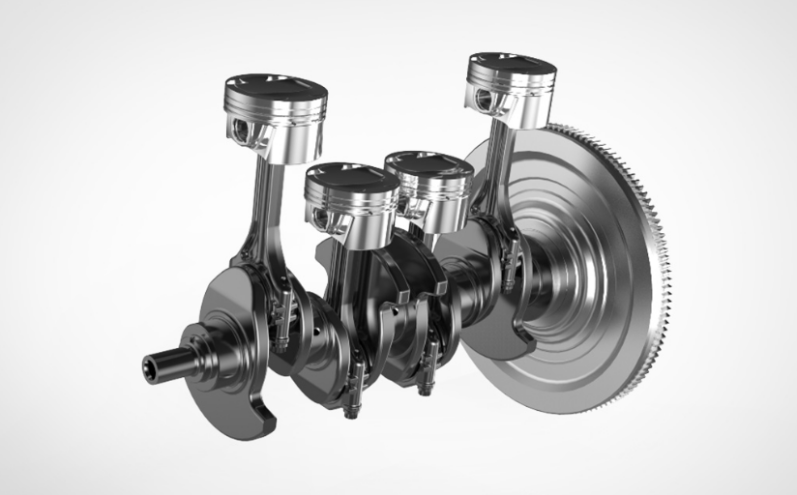A connecting rod comprises three main components: the big end, the rod body, and the small end. The big end is partially integrated with the rod body, while the other half forms the rod cap. The connecting rod cap is secured to the main crankshaft journal using bolts and nuts. This essential component serves as the link between the piston and the crankshaft. Its primary function is to transmit the force generated by the piston to the crankshaft, converting the piston's reciprocating motion into the crankshaft's rotational motion. Within automotive engines, connecting rods play a crucial role in transmitting the expanding gas pressure from the piston to the crankshaft, thereby converting the piston's linear motion into the crankshaft's rotational motion to generate power.

Raw Material and Forging
Connecting rods are primarily fabricated from high-strength materials such as SAE1045 carbon steel and ASTM 5140/40Cr carbon steel. These materials undergo quenching and tempering processes to enhance their machining capabilities and impact resistance. SAE1045 carbon steel is required to have a hardness ranging from HB217 to HB293, while ASTM 5140/40Cr should have a hardness between HB223 and HB280.
The production of connecting rod blanks typically involves forging. There are two common blank forms: one where the body and cap are separately forged, and the other where they are initially integrated and later separated during machining or via an expansion process during processing. To ensure the integrity of the blanks and prevent defects, it is essential to conduct 100% hardness measurements and flaw detection.

Attributes of a High-Quality Connecting Rod
Connecting rods operate within a temperature range of 90 to 100°C, and their rotational speed varies from 3000 to 5000 revolutions per minute. To guarantee the seamless integration of connecting rod forgings into automated precision machining processes and the assembly precision of finished engine parts, they must withstand extremely high-frequency tensile and compressive alternating stress during high-speed operation. This ensures that the crankshaft remains in a balanced state. Therefore, connecting rod forgings must possess high strength and exceptional fatigue life.
In addition to meeting dimensional accuracy specifications, connecting rod forgings must also adhere to the following technical and quality requirements:
The specified draft angle should range from 3° to 5°, with an unspecified R value between 2 and 5mm.
The forging surface must be smooth and free from defects such as cracks, folds, scarring, or oxide skin (pits with a depth of >1mm).
The residual flash width on the parting surface should not exceed 0.8mm.
The orientation of metal fibers within the longitudinal section should align with the centerline direction, consistent with the appearance, and free from any disorder, discontinuity, or defects like pores, cracks, folds, or non-metallic inclusions.
The hardness following quenching and tempering treatments should fall within the range of 220 to 270HB.
Forgery forgings must undergo flaw detection inspections.
Defects on forgings are not permitted for repair welding.
The quality deviation for each batch of forgings should be within ≤ 3%.
18
Sep
Structure and Function of Connecting Rod
Related News
- Metallurgical Defects in Titanium Alloy Forging Process
- The Defects of Forged Components and Improvement Measures
- Media Selection for Optimizing Forging Quenching Process
- Challenges and Solutions in Special Alloy Forging
- Forging Measurement and Inspection Methods
- Overheating in Forging: Causes, Effects and Prevention
- Precision Die Forging: Advantages and Applications
- Understanding and Mitigating Oxidation in Forgings
- What Affect the Performance of Aluminum Alloy Forging?
- Forging Pickling Process and Its Key Role

